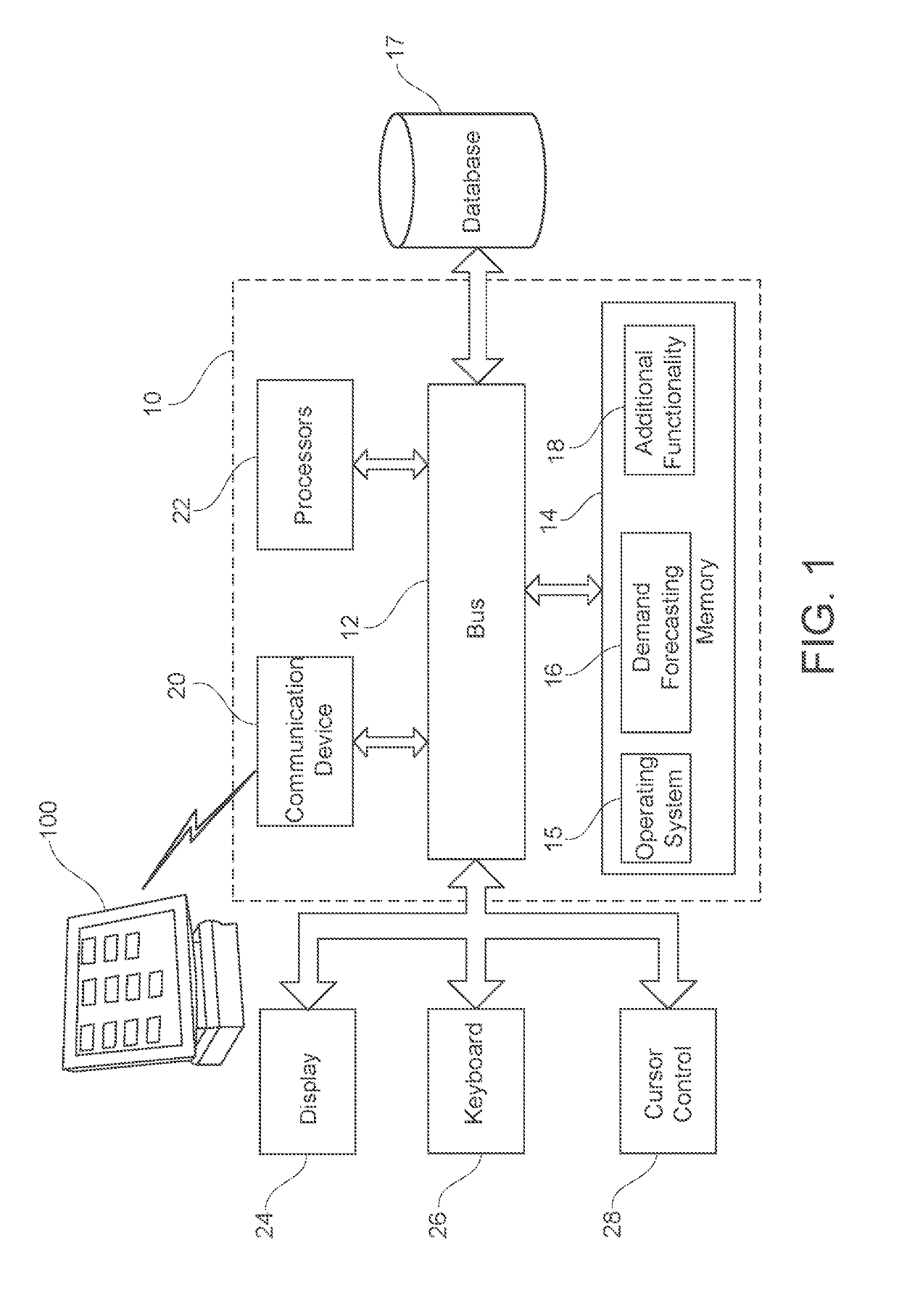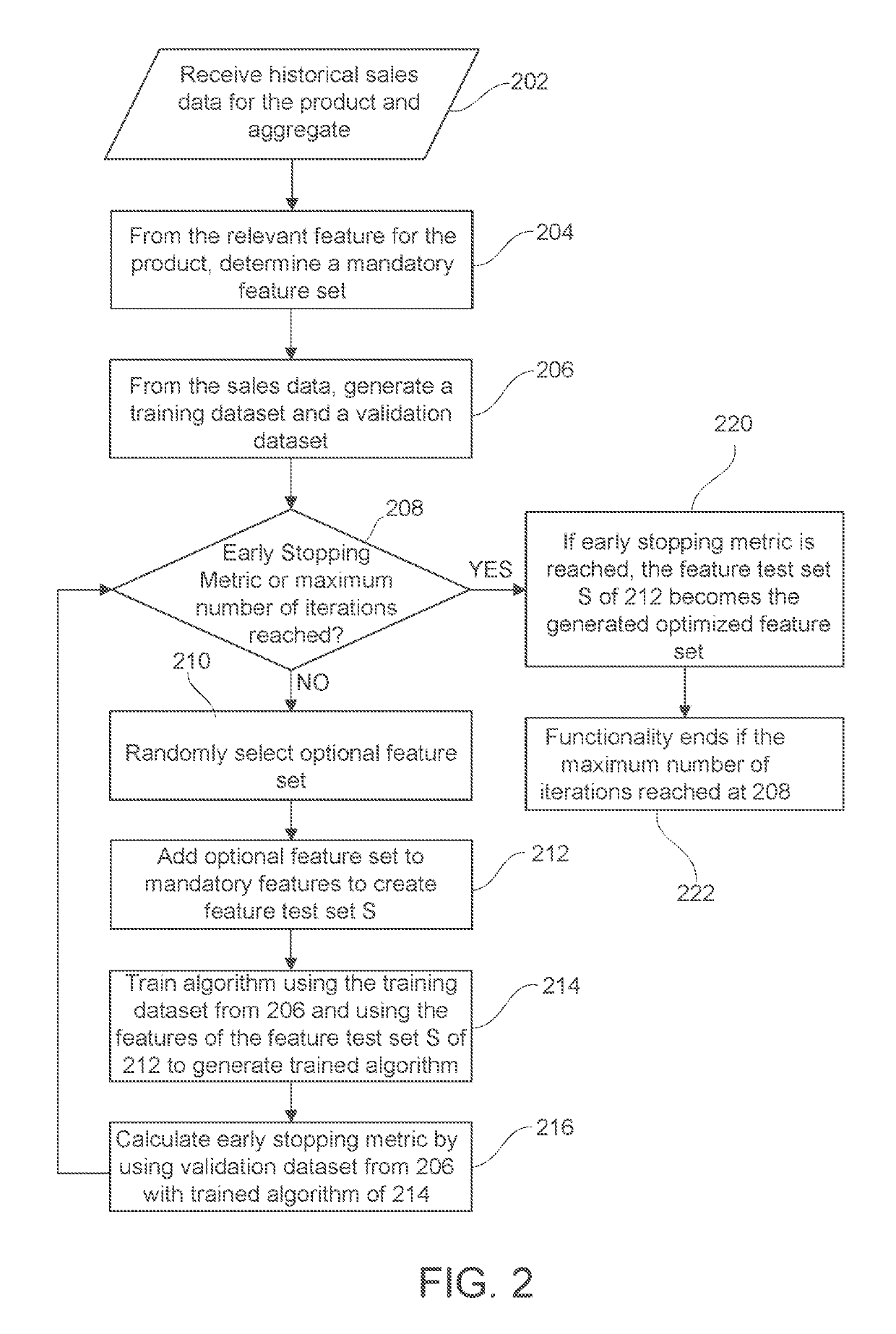Dynamic feature selection for model generation
a dynamic feature and model technology, applied in the field of computer systems, can solve problems such as inaccurate forecasts, increased costs associated with holding inventories, and loss of revenues
- Summary
- Abstract
- Description
- Claims
- Application Information
AI Technical Summary
Benefits of technology
Problems solved by technology
Method used
Image
Examples
Embodiment Construction
[0015]One embodiment determines a set of relevant features for an item in order to determine a demand forecast for the item. The set of features include mandatory features and optional features. The determined features are used to train one or more models that are subsequently used to generate the demand forecast.
[0016]Sales and demand forecasting methods can roughly be grouped into judgmental, extrapolation and causal methods. Extrapolation methods use only the time series data of the activity itself to generate the forecast. Known particular algorithms / methods range from the simpler moving averages and exponential smoothing methods to the more complicated Box-Jenkins approach. While these known methods identify and extrapolate time series patterns of trend, seasonality and autocorrelation successfully, they do not take external factors such as price changes and promotion into account.
[0017]Vector Auto Regression (“VAR”) methods extend the Box-Jenkins methods to include other varia...
PUM
 Login to View More
Login to View More Abstract
Description
Claims
Application Information
 Login to View More
Login to View More - R&D
- Intellectual Property
- Life Sciences
- Materials
- Tech Scout
- Unparalleled Data Quality
- Higher Quality Content
- 60% Fewer Hallucinations
Browse by: Latest US Patents, China's latest patents, Technical Efficacy Thesaurus, Application Domain, Technology Topic, Popular Technical Reports.
© 2025 PatSnap. All rights reserved.Legal|Privacy policy|Modern Slavery Act Transparency Statement|Sitemap|About US| Contact US: help@patsnap.com



